The project of the House of Culture and Science, A. Grinberg, M. Smurov, M. Kurilko, T. Bardt, S. Polygalin, et al, 1931
The design project described the largest public building in Siberia in the 1930s. The original concept of the theater is similar to the project of the Total Theater by Walter Gropius and Erwin Piscator, and the rare tectonics of the two combined domes allude to the first two-dome Goetheanum, a synthetic theater of total performance (in other words "gesamtkunstwerk" – this term refers to the creative concept of the "unity of arts", the artistic transformation of reality through interaction of different art genres in one work).
The design project of the House of Culture and Science was a ‘panoramic-planetary type’ theater, which encompassed the engineering facilities and the real environment. The theater was designed in such a way as to allow columns of demonstrators, trucks, tractors, carriages, and tanks to enter the circular theater platforms right from the street. Images were to be projected onto the internal surface of the 60-meter reinforced concrete dome with a ‘planetary’ 360-degree film projector. The spectator as a passive viewer no longer existed — everyone was involved in the general action. In the Soviet interpretation, the ‘gesamtkunstwerk’ was aimed at exciting the revolutionary ecstatic energy in the masses.
-
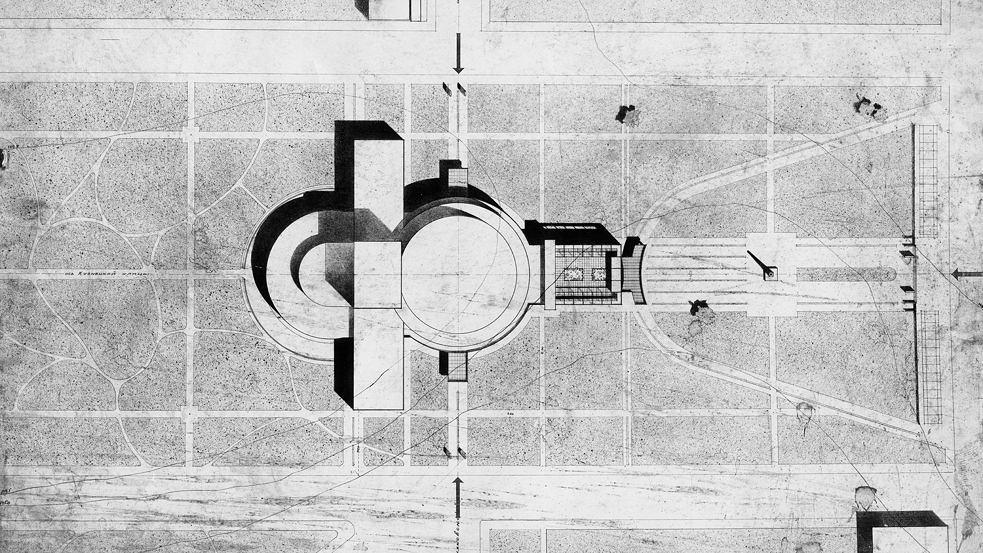 © Museum of the History of Architecture of Siberia named after S.N. Balandin
© Museum of the History of Architecture of Siberia named after S.N. Balandin
View of the House of Culture and Science, perspective | M.I. Kurilko, T.J. Bardt, A.Z. Grinberg, 1931
-
 © Museum of the History of Architecture of Siberia named after S.N. Balandin
© Museum of the History of Architecture of Siberia named after S.N. Balandin
TEOMASS, scenography system | M.I. Kurilko, T.J. Bardt, early 1930s
-
 © Museum of the History of Architecture of Siberia named after S.N. Balandin
© Museum of the History of Architecture of Siberia named after S.N. Balandin
House of Culture and Science, plan | M.I. Kurilko, T.J. Bardt, A.Z. Grinberg, early 1930s
-
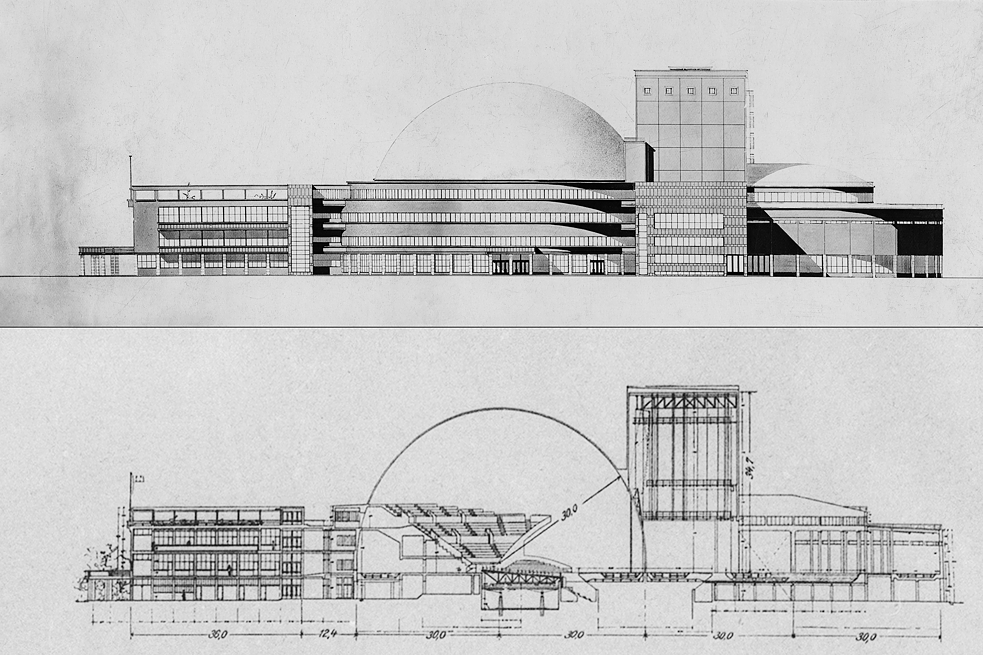 © Museum of the History of Architecture of Siberia named after S.N. Balandin
© Museum of the History of Architecture of Siberia named after S.N. Balandin
House of Culture and Science, southern facade, cut | M.I. Kurilko, T.J. Bardt, A.Z. Greenberg, early 1930s
-
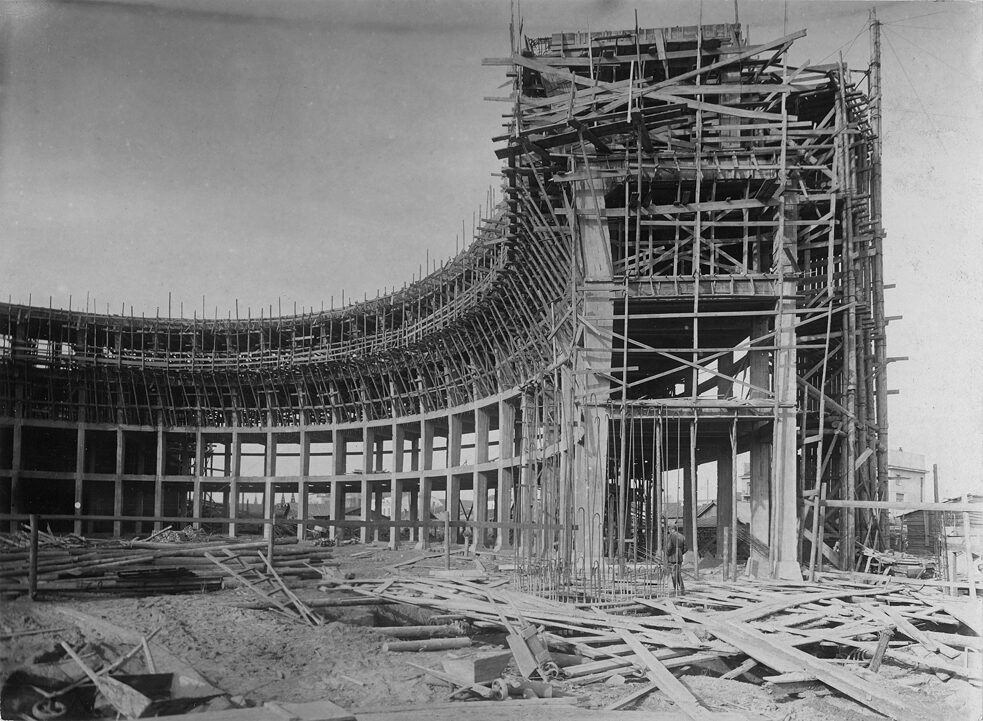 © Museum of the History of Architecture of Siberia named after S.N. Balandin
© Museum of the History of Architecture of Siberia named after S.N. Balandin
Construction of the House of Culture and Science, lobbies, 1932
-
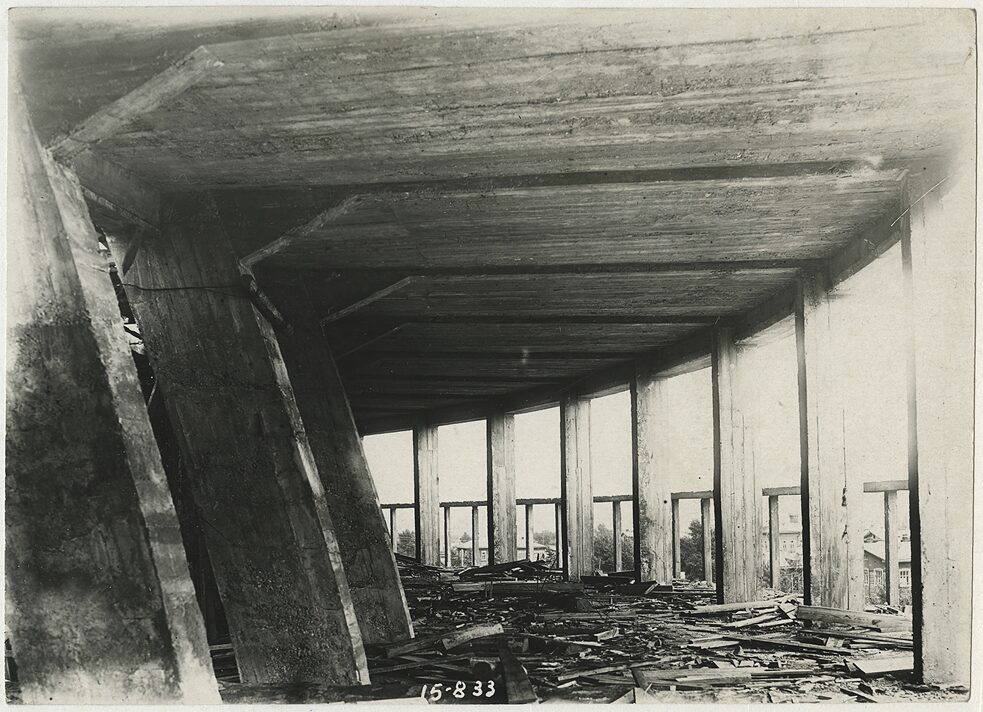 © Museum of the History of Architecture of Siberia named after S.N. Balandin
© Museum of the History of Architecture of Siberia named after S.N. Balandin
Construction of the House of Culture and Science, stage box scaffolding, 1933
-
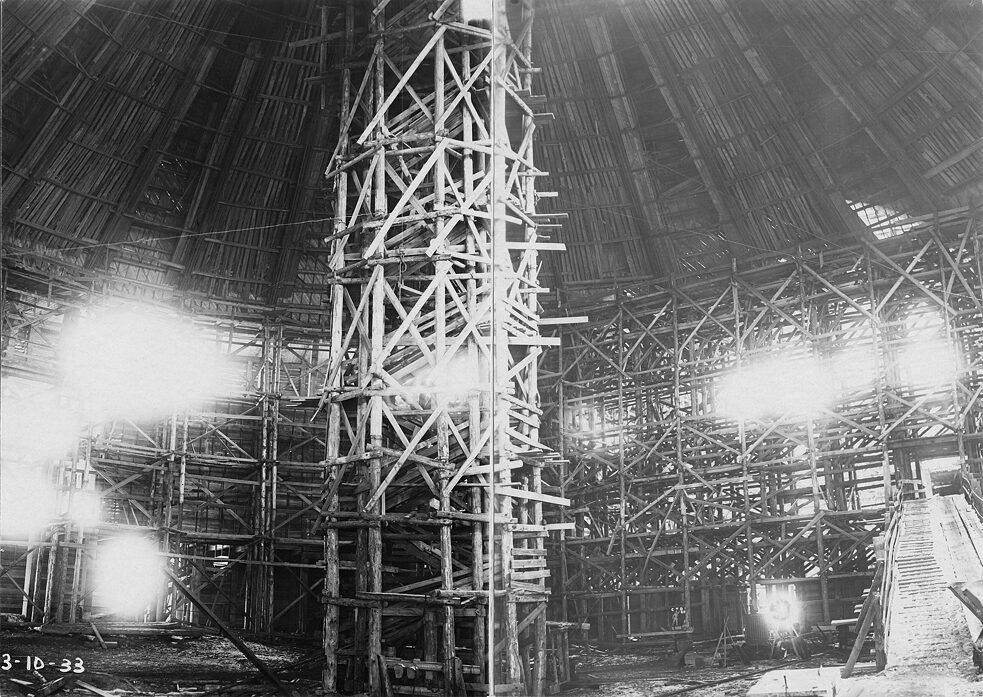 © Museum of the History of Architecture of Siberia named after S.N. Balandin
© Museum of the History of Architecture of Siberia named after S.N. Balandin
Construction of the House of Culture and Science, interior view of spectators hall, 1933
-
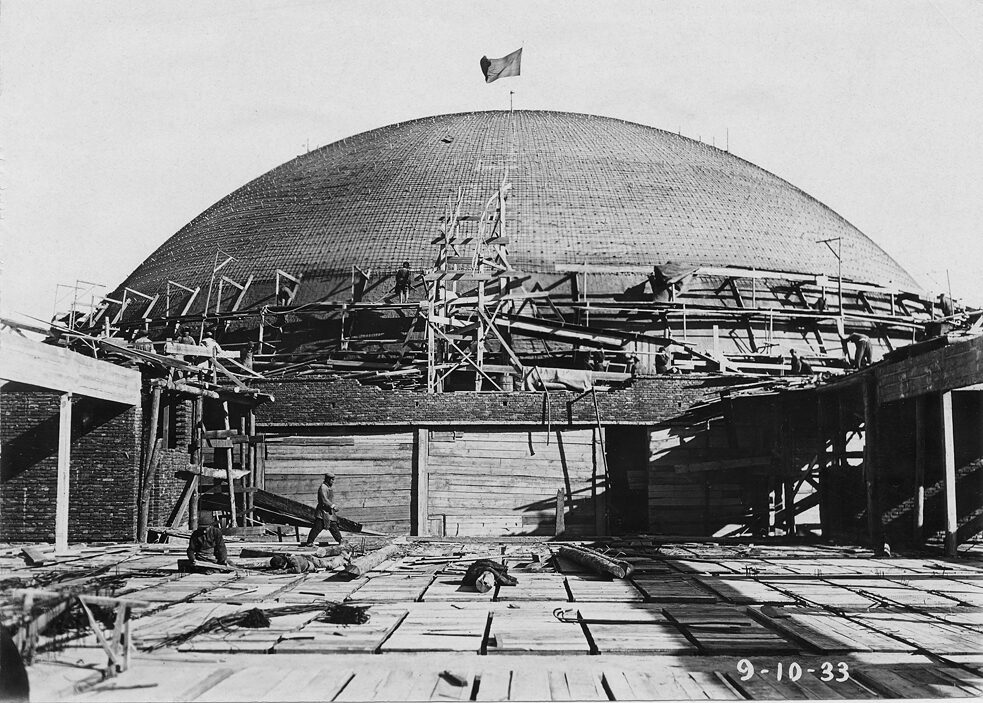 © Museum of the History of Architecture of Siberia named after S.N. Balandin
© Museum of the History of Architecture of Siberia named after S.N. Balandin
Construction of the House of Culture and Science, installation of reinforced concrete dome, 1933
-
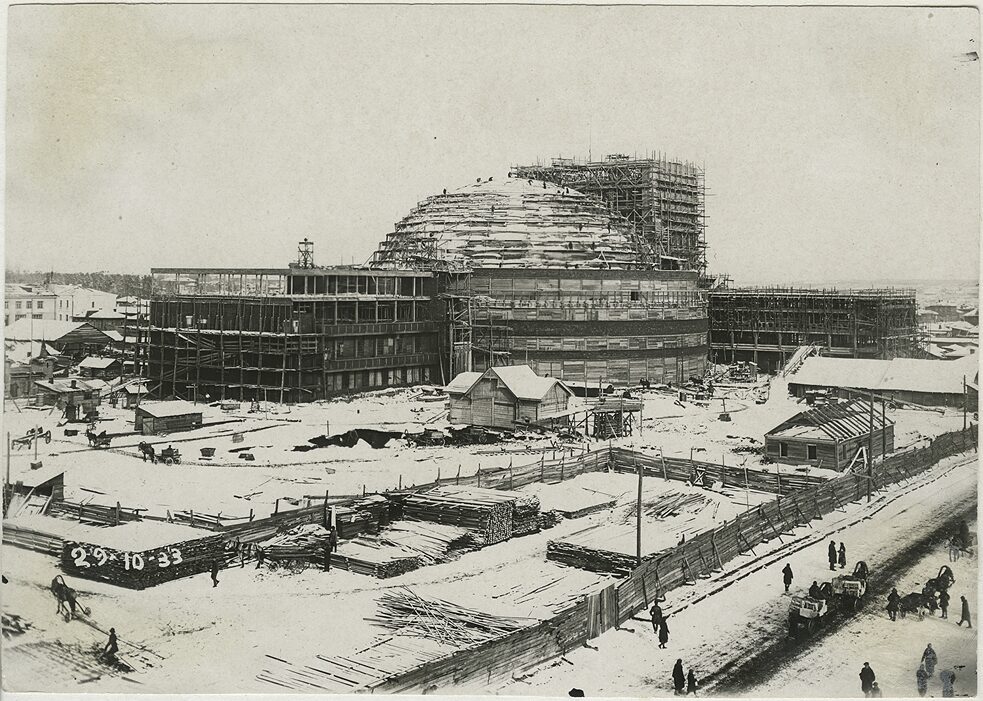 © Museum of the History of Architecture of Siberia named after S.N. Balandin
© Museum of the History of Architecture of Siberia named after S.N. Balandin
View of the construction of the House of Culture and Science from the City Council building, 1933
The House of Culture and Science declared the ambition of Novosibirsk to be the capital of the Siberian krai. Implementation of the project was interrupted by the change in the cultural policy in the USSR in the early 1930s. By that time, the reinforced concrete frame of the building and the dome structure had been completed. The functional meaning of the theater had changed — the revolutionary mysterium was now adapted to the needs of the opera and ballet theater.









